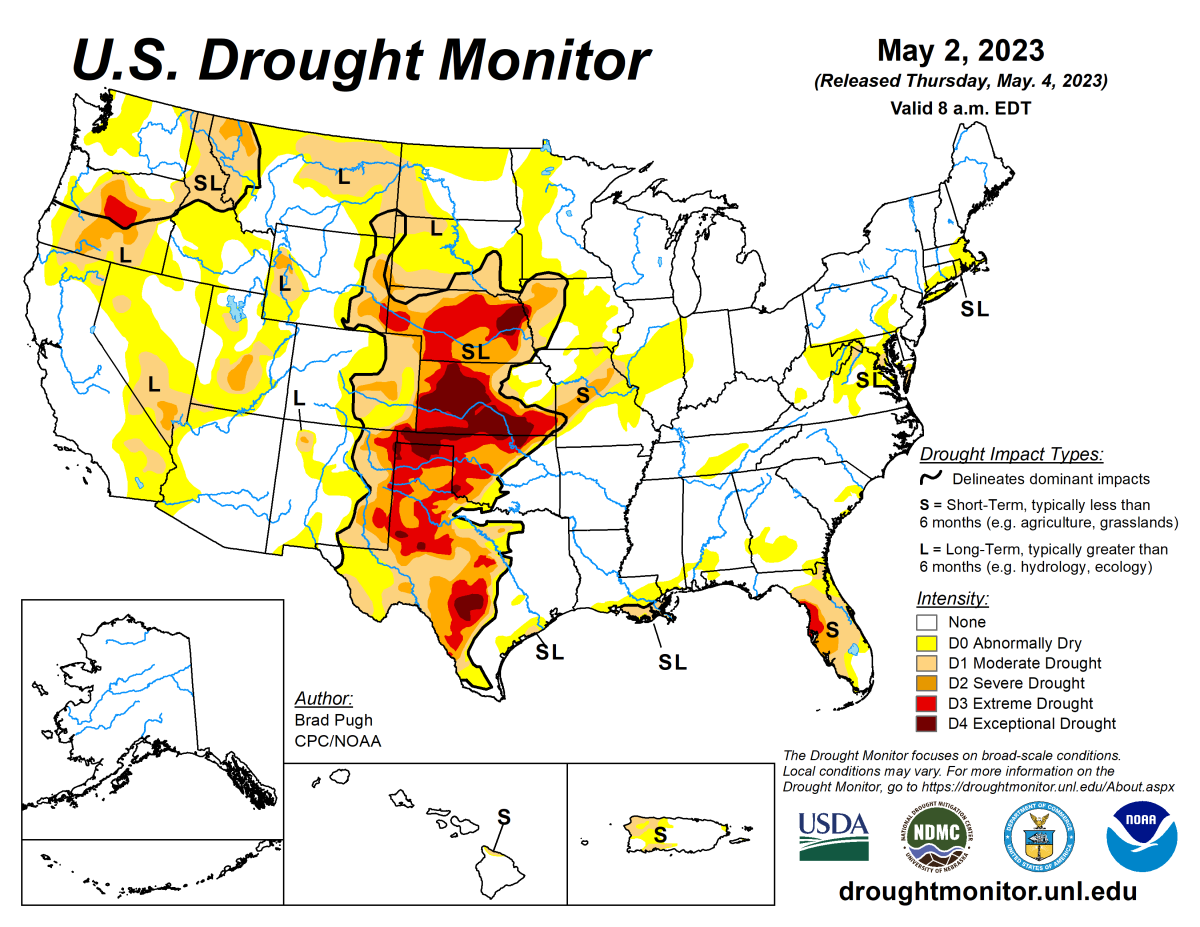
According to the May 2, 2023 U.S. Drought Monitor, moderate to exceptional drought covers 20.4% of the United States including Puerto Rico, a decrease from last week’s 21.4%. The worst drought categories (extreme to exceptional drought) increased slightly from 5.0% last week to 5.1%.
The contiguous U.S. experienced a complicated upper-level circulation pattern during this U.S. Drought Monitor week (April 26-May 2). A couple of upper-level weather systems, also known as “short-wave troughs”, moved across the central and eastern contiguous U.S. during the first part of the week, dragging cold fronts and surface low-pressure systems along with them. These fronts and surface lows tapped Gulf of Mexico and Atlantic moisture to spread above-normal precipitation across parts of the central and southern Plains to the Southeast and along the Eastern Seaboard.
As the week progressed, the upper-level circulation became more distorted, or “meridional”, with an upper-level ridge dominating the West. This resulted in a drier-than-normal week for the West, central to northern Plains, and Mid- to Upper Mississippi Valley. A huge low-pressure trough developed over the Great Lakes to the northeastern contiguous U.S. during the last half of the week, with an associated surface low-pressure system generating persistent strong winds across much of the eastern contiguous U.S. for several days.
As the week ended, another huge low-pressure trough developed in the upper-level flow over the West Coast.
Weekly temperatures averaged cooler than normal across most of the contiguous U.S. east of the Rockies, in association with the stalled upper-level trough in the east, while the upper-level ridge brought warmer-than-normal temperatures to the West. Drought or abnormal dryness expanded or intensified where it continued to dry in parts of the Plains to the Mid-Mississippi Valley. Drought or abnormal dryness contracted or reduced in intensity across other parts of the central to southern Plains and in parts of the Southeast, Mid-Atlantic to Northeast, and Puerto Rico.
Nationally, contraction exceeded expansion, with the nationwide moderate to exceptional drought area decreasing this week. Abnormal dryness and drought are currently affecting over 91 million people across the United States including Puerto Rico—about 29.4% of the population.

The full U.S. Drought Monitor weekly update is available from Drought.gov.
In addition to Drought.gov, you can find further information on the current drought as well as on this week’s Drought Monitor update at the National Drought Mitigation Center.
The most recent U.S. Drought Outlook is available from NOAA’s Climate Prediction Center and the U.S. Department of Agriculture provides information about the drought’s influence on crops and livestock.
For additional drought information, follow #DroughtMonitor on Facebook and Twitter.



